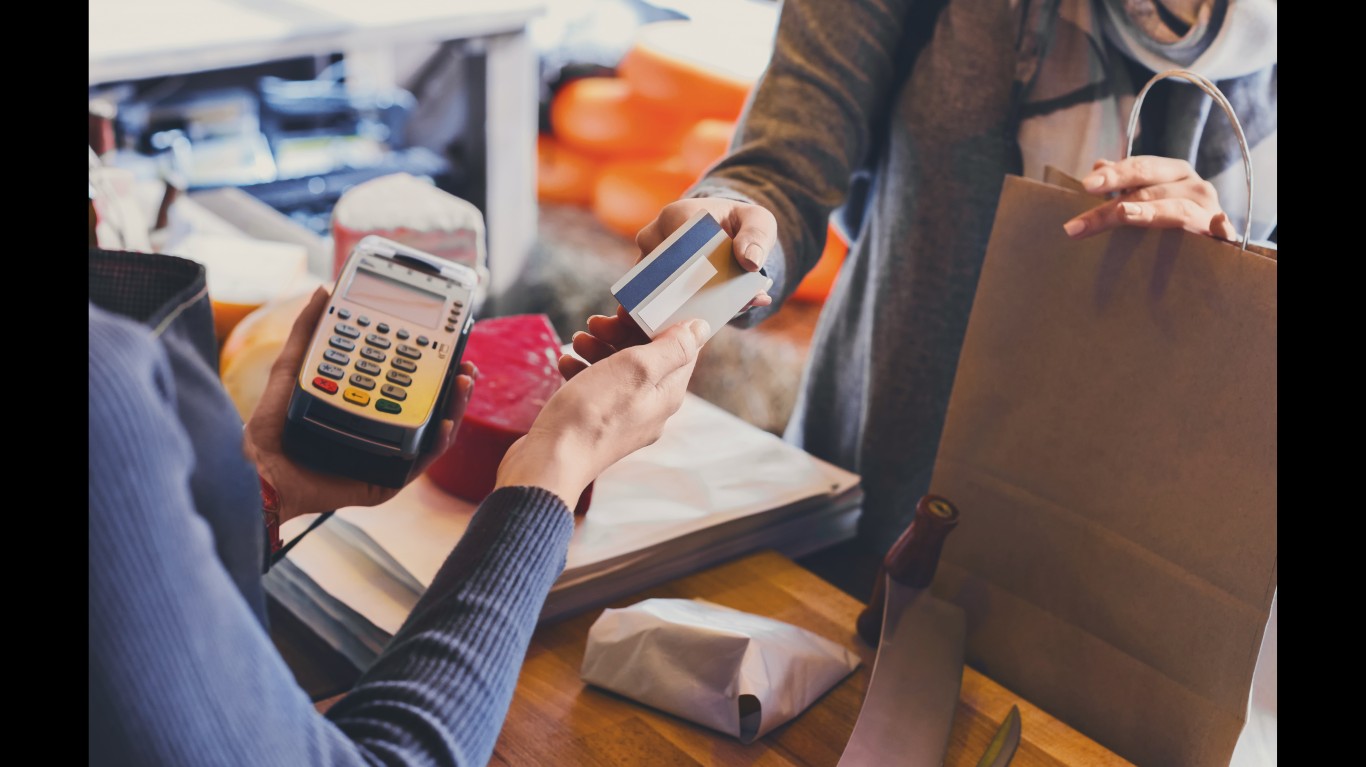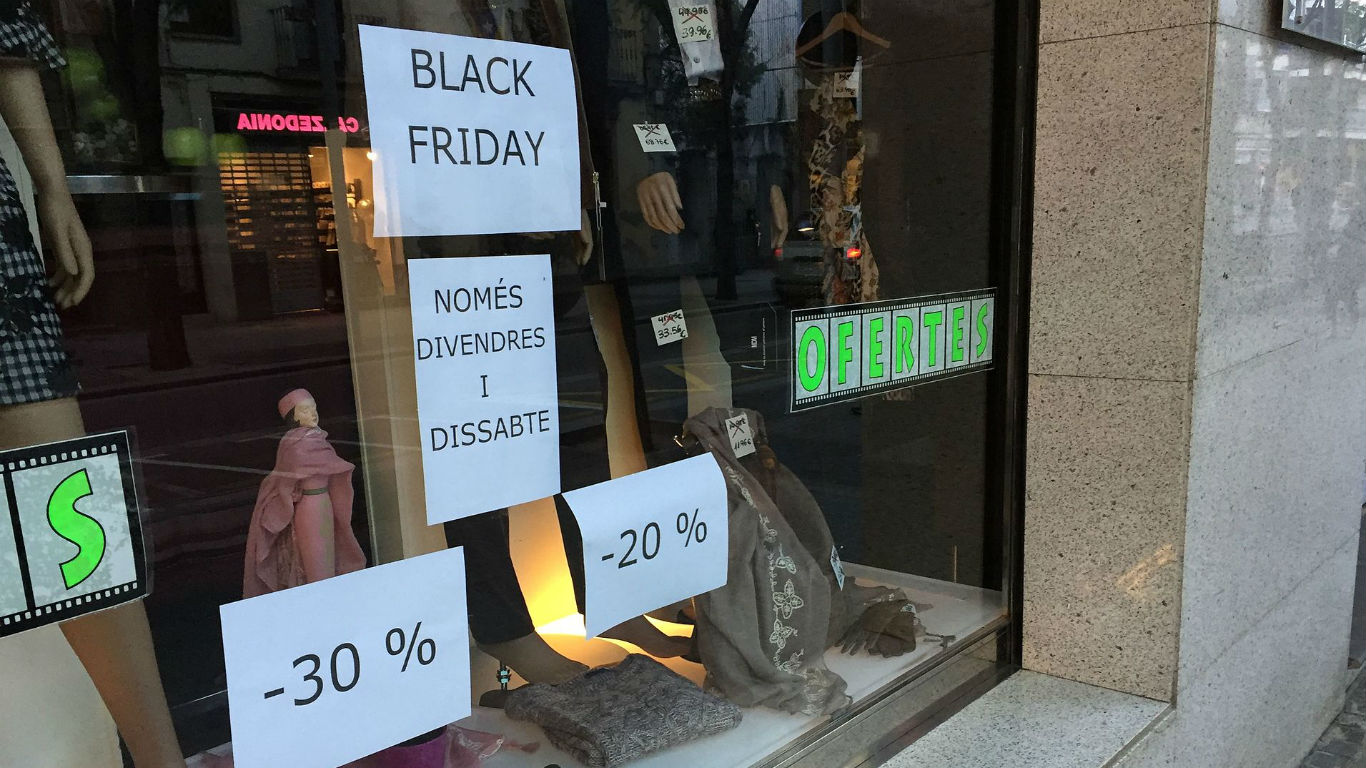Special Report
17 Ways Black Friday Has Changed Since the 1950s

Published:
Last Updated:

Changes happen very quickly nowadays. It wasn’t so long ago that cell phones only had the ability to make a call and send a text; now you can even do your holiday shopping on them. But despite drastic lifestyle transformations, some traditions remain strong. Such is the Black Friday madness.
The big shopping day has been around long before it even unofficially became known as “Black Friday.” It has been described for years as the day when the pre-Christmas bonanza begins, but it has changed in several ways to keep up with the times.
The day after Thanksgiving is one of the busiest shopping days of the year and it has grown to hard-to-believe proportions — going global, too. In 2018, for example, more than 164 million consumers — or about 78% of the U.S. adult population — shopped over the holiday.
In a nutshell, Black Friday has become about getting little to no sleep so you can wait outside malls and megastores to catch the best deals on offer. But consumers have changed their priorities and retailers are adapting. Black Friday is now a week-long event, with new ways to lure shoppers emerging every year. Sometimes it’s hard to keep track and a little planning may be helpful — here are 30 tips to start planning Thanksgiving right now.
Click here to see 17 ways Black Friday has changed since the 1950s.

1. The holiday used to be later
Thanksgiving used to be celebrated on the last Thursday of November after President Abraham Lincoln declared it a national holiday in 1863. But in 1941 Congress passed a law officially moving the day to the fourth Thursday of the month because businesses complained that they would go bankrupt if the day fell too close to the end of the month. Most people start their Christmas shopping after Thanksgiving, which meant a shorter shopping season. Sometimes, like this year, however, Thanksgiving still falls on the last Thursday of the month.
[in-text-ad]
2. “Black Friday” stood for traffic jams and crowded stores
According to legend, the Philadelphia Police Department named the day after Thanksgiving “Black Friday” in the 1950s or early 1960s. The police used the term to describe the terrible traffic jams and crowds. Enforcing law and order on a day when so many people are trying to get the best deals must be a dark experience indeed. “Black Friday” was first used in an ad in 1966 by a store — located in Philadelphia — that sold stamps.
3. Black Friday is more of a season and less of a day
Ads about Black Friday deals appear on TV, radio, billboards, etc., long before the big shopping day. People start researching and signing up for notifications even before that. Shopping starts on Thanksgiving and doesn’t end until at least five days later on Cyber Monday. More than 164 million consumers — or about 78% of the U.S. adult population — were shopping during this period last year.

4. Half of shopping is done on Black Friday
Judging by the big crowds at malls a day or two before Christmas Day, you’d think everybody was a procrastinator. In reality, however, about 60% of adults already made half of their holiday purchases on Thanksgiving, Black Friday, or Cyber Monday, according to a survey conducted by Toluna, which creates online questionnaires.
[in-text-ad-2]

5. Sales rise every year
People seem to be spending more and more on Black Friday. With the understandable exception of 2008, a recession year, sales have steadily gone up over the last 15 years by an average of 2.5%. People spent more than $717.5 billion in 2018, up from $416.4 billion in 2002.

6. Stores started opening on Thanksgiving
Thanksgiving used to be strictly a day to spend with family. That changed in 2011 when some stores opened on the evening of Thanksgiving, luring shoppers with huge discounts. The early beginning of the Black Friday madness has since become the rule and not the exception.
[in-text-ad]

7. The day is increasingly observed worldwide
Black Friday is now a global shopping event. Interest from other countries has increased by an average of 117% over the last five years, according to the International Business School. Brazilians are among the biggest Black Friday fans, with a record number of people, increasingly online, making the most of deals on everything from real estate to French fries.

8. More people are shopping online
The end of Black Friday as we know it may be coming. Monday is becoming the more popular shopping event than the preceding Friday, according to the National Retail Federation. Over the 2018 Thanksgiving weekend as a whole, 41.4 million shopped online compared with 34.7 million in stores only. Cyber Monday 2018 was the largest online shopping day in U.S. history. The use of mobile devices to make holiday decisions is also on the rise.
9. People are willing to spend more on Black Friday
The amount of money the average shopper is willing to spend is also up — from about $735 in 2005 to more than $1,000 last year. This amount is about 4% more than what people said they’d spend in 2017, which was an average of $967, according to the National Retail Federation.
[in-text-ad-2]
10. People are willing to line up longer
Many shoppers wake up early, or don’t sleep at all, to line up for deals at stores, hoping to get in the store as soon as possible before discounted items are gone. Some start shopping at midnight, others sleep in tents outside the stores.

11. People shop online after Thanksgiving dinner
People’s favorite activity on Thanksgiving may not be watching football after dinner anymore; it just might be shopping online. In 2018, people spent $3.7 billion online on Thanksgiving Day alone, an increase of 28% from the previous year. Considering how mobile devices are increasingly used, it wouldn’t be a surprise if this year people don’t even wait until after dinner to start shopping.
[in-text-ad]

12. Social media is a big player
There are still plenty of ads in local and national papers, as well as on TV, but young shoppers are changing the advertising game. People between 18 and 34 years old use social media for inspiration and for making holiday purchase decisions over the Thanksgiving weekend. About a third of Americans in that age range look up sales and promotions on Facebook, a fifth use Instagram.
13. More shoppers are willing to wait
At a time when the economy is doing well and wages are rising, people don’t feel pressure to save as much money as possible for items they want or need. They are not in quite such a rush to find the best possible sale on the market. Shoppers have become more savvy about pricing and are simply willing to wait for better deals.
14. Vendors push doorbuster deals
Black Friday no longer feels like the day for the very best deals of the year because many of the deals, discounts, and promotions have already been available for a week or two. Some of the biggest retailers start offering deals as early as Nov. 1.
[in-text-ad-2]
15. Many consumers begin holiday shopping by Halloween
About 40% of U.S. consumers start shopping for the Christmas season two months in advance — by Halloween, according to a report by the National Retail Federation. A study by the coupon company Retailmenot.com found an even more surprising number — 25% of shoppers start their holiday shopping before October. Consumers are pushing retailers to start offering deals earlier and earlier.
16. Amazon starts countdown to Black Friday deals
Online shopping is changing Black Friday in several ways, one of which is making it easier for bargain hunters to stay on top of deals. Amazon, for example, launched the “Countdown to Black Friday” about a month before the big day. Dozens of “deals of the day” are listed at any given time.
[in-text-ad]

17. Merchants plan sophisticated sales strategies for the day
Retailers go big on deals (so they don’t have to go home). The average discount in 2018 was 49.6%, a percent higher than the previous year. Writing off half the price is common but some stores offer even better deals — like 70% off — to loyal customers. Brands and big stores now have promotional campaigns coordinated across several channels — TV, email, social media, and websites. There are plenty of deals for the so-called “last-minute shoppers,” too.
The last few years made people forget how much banks and CD’s can pay. Meanwhile, interest rates have spiked and many can afford to pay you much more, but most are keeping yields low and hoping you won’t notice.
But there is good news. To win qualified customers, some accounts are paying almost 10x the national average! That’s an incredible way to keep your money safe and earn more at the same time. Our top pick for high yield savings accounts includes other benefits as well. You can earn up to 3.80% with a Checking & Savings Account today Sign up and get up to $300 with direct deposit. No account fees. FDIC Insured.
Click here to see how much more you could be earning on your savings today. It takes just a few minutes to open an account to make your money work for you.
Thank you for reading! Have some feedback for us?
Contact the 24/7 Wall St. editorial team.